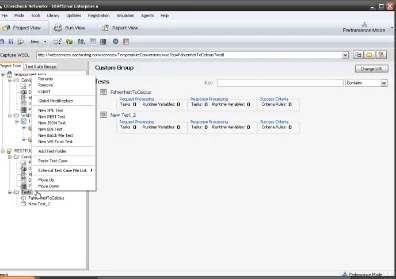Soap Vs Rest Web Services
Content
- Wsdl
- Soap Vs Rest: Primary Differences
- Why Use Xmlsoap When Json So Simple And Easy To Handle?
- Not The Answer You’re Looking For? Browse Other Questions Tagged Rest
It’s funny how people are slowing adding around json that they already had for xml. Now people are even looking at different options for adding namespaces to json and relaxing the “standard” so they can add comments. In short, SOAP has a way of specifying the data structure in a maturely formatted document . Layered system – There might be several layers of servers between the client and the server that returns the response. Cacheable resources – Server responses should contain information about whether the data they send is cacheable or not. Cacheable resources should arrive with a version number so that the client can avoid requesting the same data more than once.
Because you can achieve most outcomes using either protocol, it’s sometimes a matter of personal preference. However, there are some use cases that SOAP tends to be better-suited for. For instance, if you need more robust security, SOAP’s support for WS-Security can come in handy. It offers some additional assurances for data privacy and integrity. It also provides support for identity verification through intermediaries rather than just point-to-point, as provided by SSL . It’s also easier to integrate with existing websites with no need to refactor site infrastructure. This enables developers to work faster rather than spend time rewriting a site from scratch.
Even though REST is a more flexible architecture, it’s also less secure. There’s no contract between the client and server like in the case of the SOAP protocol, so it’s not recommended for web services where you need to transfer highly confidential data over the network. You’ll also need to create and maintain detailed documentation for your web service so that users of your REST API can understand the nature and implications of each API call. SOAP is a standardized protocol that sends messages using other protocols such as HTTP and SMTP. The SOAP specifications are official web standards, maintained and developed by the World Wide Web Consortium . As opposed to SOAP, REST is not a protocol but an architectural style.
Wsdl
The daily quote is retrieved via a GET request to your RESTful API at /api/v1/quote. The feedback you’ve received is great and your users are engaged.
- REST is a great choice for startups, mobile apps, and developers building modern Single Page Applications .
- SOAPSimple Object Access Protocolis an object-oriented protocol whereby objects are exchanged between client and server, serialized to and from XML.
- Nowadays, REST is the most popular choice of developers to build public APIs.
- JSON is simpler and more compact than XML and allows building lightweight parsers on the client side.
TheWorld Wide Web Consortium recommends standards and protocols for the global collection of interconnected resources that we know as the World Wide Web. A “web” resource is accessed at a “web” address and delivered over a “web” protocol.
Soap Vs Rest: Primary Differences
It supports basic authentication and communication encryption through TLS. Any further security should be additionally implemented at the server. SOAP and REST – both provide support for building SOA-based applications. The choice of which one to use – largely depends on what really is required, from the business and an architectural point of view. JSON is an open standard file format used to transmit data objects between many applications. It is a lightweight format to store and transfer data and is often used when sending data from a server to a web page.

SOAP relies exclusively on XML to provide messaging services, which can become extremely complex in some cases, e.g., accessing web service via javascript. Lack of Security – REST does not impose any sort of security like SOAP. Another important factor in the development of modern client-server systems was the use of the JSON format for describing the transmitted data.
Why Use Xmlsoap When Json So Simple And Easy To Handle?
REST and SOAP, simply put, are methods of communication between applications. Still, a comparison can be made highlighting the benefits and drawbacks of using one over the other.
In this manner, developers focus on writing minimal code by using APIs provided to them by the platforms they are building upon. SOAP is a standard protocol which has is used for sending messages.
Both typically utilize HTTP protocols and methods (i.e. GET, POST, DELETE), but can also use other protocols, such as STMP. Both SOAP and REST connect to two applications via server-side data that is machine and human-readable. The effectiveness of loosely or strictly typed languages has always been debated among developers of web applications. SOAP APIs vs REST APIs – exploring the differences and similarities between these two approach to web services. However, with SOAP, you are needed to define your service using WSDL, and greater overhead is involved in the processing and parsing of the SOAP-XML messages.
So if a quick win solution is required for web services, then REST is the way to go. Statelessness – If there is no need to maintain a state of information from one request to another then REST should be used. If you need a proper information flow wherein some information from one request needs to flow into another then SOAP is more suited for that purpose. These sites normally need the user first to add items which need to be purchased to a cart.
SOAP is a web communication protocol, which stands for Simple Object Access Protocol. It is a type of standardized messaging protocol that uses anXML data formatto communicate requests between server and client. Many large enterprise organizations prefer SOAP because it provides for greater security and scalability. However, SOAP implementation is common with all size organizations, and not reserved for solely large enterprise corporations such as banks. A REST API is an application programming interface that conforms to the constraints of REST architectural style and allows for interaction with RESTful web services. REST stands for representational state transfer and was created by computer scientist Roy Fielding. REST and SOAP are 2 different approaches to online data transmission.
If a communication fails, the client has to deal with it by retrying. This means that both parties need to understand both content and context. If your application needs a guaranteed level of reliability and security, then SOAP 1.2 offers additional standards to ensure this type of operation. GraphQL is a query language generally used to load data from a server to a client, but it does so very efficiently. Created by Facebook, this relatively new technology supports reading, writing, and subscribing to changes to data, and GraphQL servers are available for languages like JavaScript, Python, C++, and more.
It supports functional tests, security tests, and virtualization. SOAP is difficult to implement and it requires more bandwidth whereas REST is easy to implement and requires less bandwidth such as smartphones. On behalf of services interfaces to business logic, SOAP uses @WebService whereas REST instead of using interfaces uses URI like @Path. Helpfully, REST services are now well-supported by tooling. The available tools and browser extensions make testing REST services continually easier and faster. REST also makes efficient use of bandwidth, as it’s much less verbose than SOAP.

Typically, an API will adhere to either REST or SOAP, depending on the use case and preferences of the developer. SOAP was originally defined as S-Simple O-Object A-Access protocol and stands for Simple Object Access Protocol.
Let’s see how quickly we can setup SAML SSO with SSOCircle. Auth0 will be the Service Provider, while SSOCircle will be the Identity Provider meaning that once a user attempts to login they will be taken to SSOCircle to verify their identity. Many companies are built around providing a RESTful API that solves a singular problem and integrates into any application seamlessly. Other common use cases for REST are companies exposing their dataset and allowing 3rd parties to build products on top of the exposed API such as the Falcon App built on top of Twitter’s RESTful API. XML Infoset – SOAP uses XML for transferring payload data which can take significantly longer to serialize which leads to performance issues. HTTP – RESTful applications are confined to the HTTP protocol. It is the only complete API development environment, used by nearly five million developers and more than 100,000 companies worldwide.
The REST architecture lays down a set of guidelines you need to follow if you want to provide a RESTful web service, for example, stateless existence and the use of HTTP status codes. Both formats are designed to connect applications and mainly utilize HTTP protocols and commands such as GET, POST and DELETE. However, SOAP depends on XML by design, while REST can also use JSON, HTML and plain text. SOAP is standardized with strict rules, while REST allows flexibility in its rules and is instead governed by architectures. SOAP is built from remote procedure calls, while REST is based on resources.
There are many great resources and guides such as the White House RESTful API Standardsand the REST API Tutorial, but many permutations of REST based API’s exist. APIs used by apps that require a lot of back-and-forth messaging should always use REST. If a user attempts to upload something to a mobile app and loses reception, REST allows the process to be retried without major interruption, once the user regains cell service. SOAP is a mature protocol with a complete spec and is designed to expose individual operations – or pieces of operations – as web services. One of the most important characteristics of SOAP is that it uses XML rather than HTTP to define the content of the message.
The body of the message is significantly smaller, in this example there actually isn’t one. To learn more about REST requests and how to do them in SoapUI, please visit ourWorking with REST Requestspage. This applies primarily to direct server to server communication, generally used for internal communication only within the confines of one company.